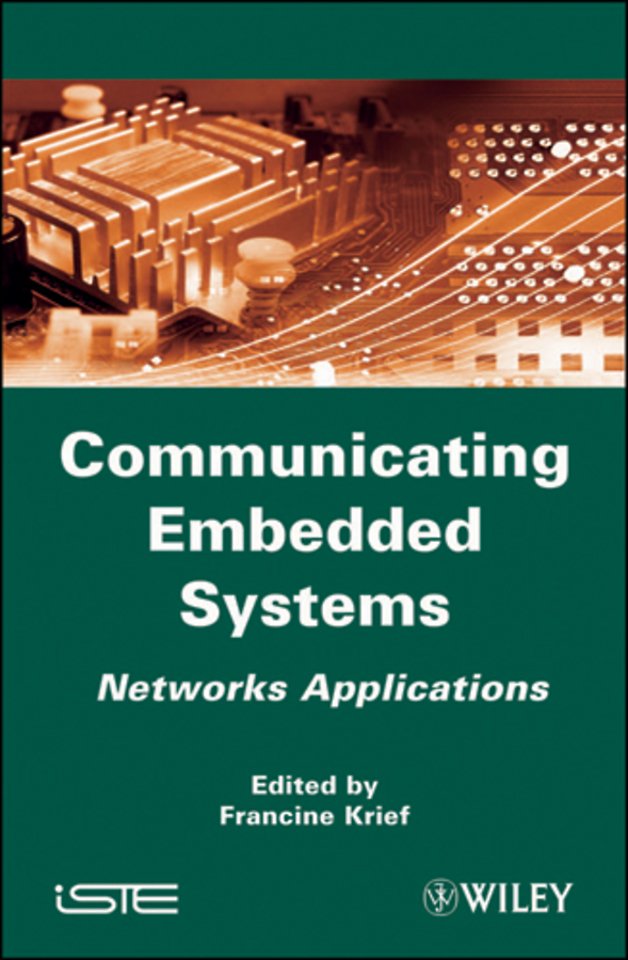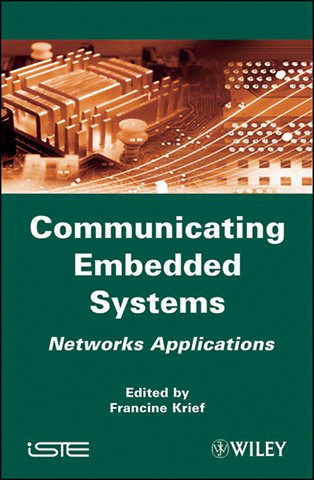Communicating Embedded Systems for Networks
Networks Applications
Samenvatting
Embedded systems become more and more complex and require having some knowledge in various disciplines such as electronics, data processing, telecommunications and networks. Without detailing all the aspects related to the design of embedded systems, this book, which was written by specialists in electronics, data processing and telecommunications and networks, gives an interesting point of view of communication techniques and problems in embedded systems. This choice is easily justified by the fact that embedded systems are today massively communicating and that telecommunications and networks constitute the main sector of embedded systems.
Specificaties
Inhoudsopgave
<p>Chapter 1. Introduction to Embedded Systems 1<br /> Patrice KADIONIK</p>
<p>1.1. Introduction 1</p>
<p>1.2. Embedded system: a definition 3</p>
<p>1.3. Properties of an embedded system 4</p>
<p>1.4. The significance of Moore s Law 6</p>
<p>1.5. Embedded systems and the system on silicon 9</p>
<p>1.6. Embedded systems and communications 12</p>
<p>1.7. Embedded systems and security 13</p>
<p>1.8. Embedded systems and time constraints 14</p>
<p>1.9. Embedded systems and free software 17</p>
<p>1.10. Embedded systems and their design 19</p>
<p>1.11. An example of multimedia embedded system design 20</p>
<p>1.12. Conclusion 25</p>
<p>1.13. Bibliography 26</p>
<p>Chapter 2. Quality–of–Service Routing in Mobile Ad Hoc Networks 29<br /> Zoubir MAMMERI</p>
<p>2.1. Introduction 29</p>
<p>2.2. Mobile ad hoc networks: concepts, characteristics, challenges 31</p>
<p>2.3. QoS routing: general considerations 37</p>
<p>2.4. Best–effort routing protocols in MANETs 47</p>
<p>2.5. QoS routing in MANETs 56</p>
<p>2.6. Conclusion 71</p>
<p>2.7. Bibliography 74</p>
<p>Chapter 3. Self–Management of Ad Hoc Sensor Networks 81<br /> Francine KRIEF</p>
<p>3.1. Introduction 81</p>
<p>3.2. Wireless sensor networks 82</p>
<p>3.3. Autonomic sensor networks 94</p>
<p>3.4. An example of self–configuration 102</p>
<p>3.5. Conclusion 109</p>
<p>3.6. Bibliography 110</p>
<p>Chapter 4. RFID Technology 113<br /> Vincent GUYOT</p>
<p>4.1. Introduction 113</p>
<p>4.2. Automatic identification systems 113</p>
<p>4.3. The components of an RFID system 116</p>
<p>4.4. The different types of RFID systems 118</p>
<p>4.5. RF ranges 120</p>
<p>4.6. Information security 120</p>
<p>4.7. Standards in force 124</p>
<p>4.8. Examples of implementations 127</p>
<p>4.9. Conclusion 136</p>
<p>4.10. Bibliography 136</p>
<p>Chapter 5. Hardware Security in Embedded Systems 139<br /> Lilian BOSSUET and Guy GOGNIAT</p>
<p>5.1. Introduction 139</p>
<p>5.2. Embedded systems and their security issues 140</p>
<p>5.3. Security of the system and its data 147</p>
<p>5.4. Secured hardware architectures for embedded systems 155</p>
<p>5.5. Conclusion168</p>
<p>5.6. Bibliography 169<br /> <br /> Chapter 6. Communications Security in Embedded Systems 175<br /> Mohamed Aymen CHALOUF</p>
<p>6.1. Introduction 175</p>
<p>6.2. Communications security 176</p>
<p>6.3. Communications security in embedded systems 195</p>
<p>6.4. Conclusion 204</p>
<p>6.5. Bibliography 204</p>
<p>Chapter 7. Cross–Layer Adaptation for Multimedia Services in 802.11–Type Embedded Communications Systems 207<br /> Ismaïl DJAMA</p>
<p>7.1. Introduction 207</p>
<p>7.2. Limits of layered structuring 209</p>
<p>7.3. The XL concept 219</p>
<p>7.4. Conclusion 231</p>
<p>7.5. Bibliography 231</p>
<p>Chapter 8. Relevance of the DTN Architecture to Mobile Ad Hoc Networks 235<br /> Olfa SAMET</p>
<p>8.1. Introduction 235</p>
<p>8.2. Mobile ad hoc networks 236</p>
<p>8.3. Challenged networks 239</p>
<p>8.4. Delay–tolerant networks 241</p>
<p>8.5. Relevance of DTNs to ad hoc mobile networks 263</p>
<p>8.6. Conclusion 266</p>
<p>8.7. Bibliography 266</p>
<p>Chapter 9. Intelligent Interfaces and Mobile Communications 267<br /> Badr BENMAMMAR and Zeina EL–FERKH JRAD</p>
<p>9.1. Introduction 267</p>
<p>9.2. Assisting the user with access to new internet services 269</p>
<p>9.3. Modeling user behavior 272</p>
<p>9.4. Synthesis of mobile and wireless networks 276</p>
<p>9.5. References for intelligent interfaces for access to mobile networks 285</p>
<p>9.6. Conclusion 294</p>
<p>9.7. Bibliography 294</p>
<p>Chapter 10. Routing and Mobility Management in Personal Networks 301<br /> Usman JAVAID and Francine KRIEF</p>
<p>10.1. Introduction 301</p>
<p>10.2. Personal environments 303</p>
<p>10.3. Routing in personal environments 306</p>
<p>10.4. Gateway discovery 311</p>
<p>10.5. Mobility management 314</p>
<p>10.6. Conclusion 319</p>
<p>10.7. Bibliography 319</p>
<p>List of Authors 321</p>
<p>Index 323</p>
Net verschenen
Rubrieken
- aanbestedingsrecht
- aansprakelijkheids- en verzekeringsrecht
- accountancy
- algemeen juridisch
- arbeidsrecht
- bank- en effectenrecht
- bestuursrecht
- bouwrecht
- burgerlijk recht en procesrecht
- europees-internationaal recht
- fiscaal recht
- gezondheidsrecht
- insolventierecht
- intellectuele eigendom en ict-recht
- management
- mens en maatschappij
- milieu- en omgevingsrecht
- notarieel recht
- ondernemingsrecht
- pensioenrecht
- personen- en familierecht
- sociale zekerheidsrecht
- staatsrecht
- strafrecht en criminologie
- vastgoed- en huurrecht
- vreemdelingenrecht

